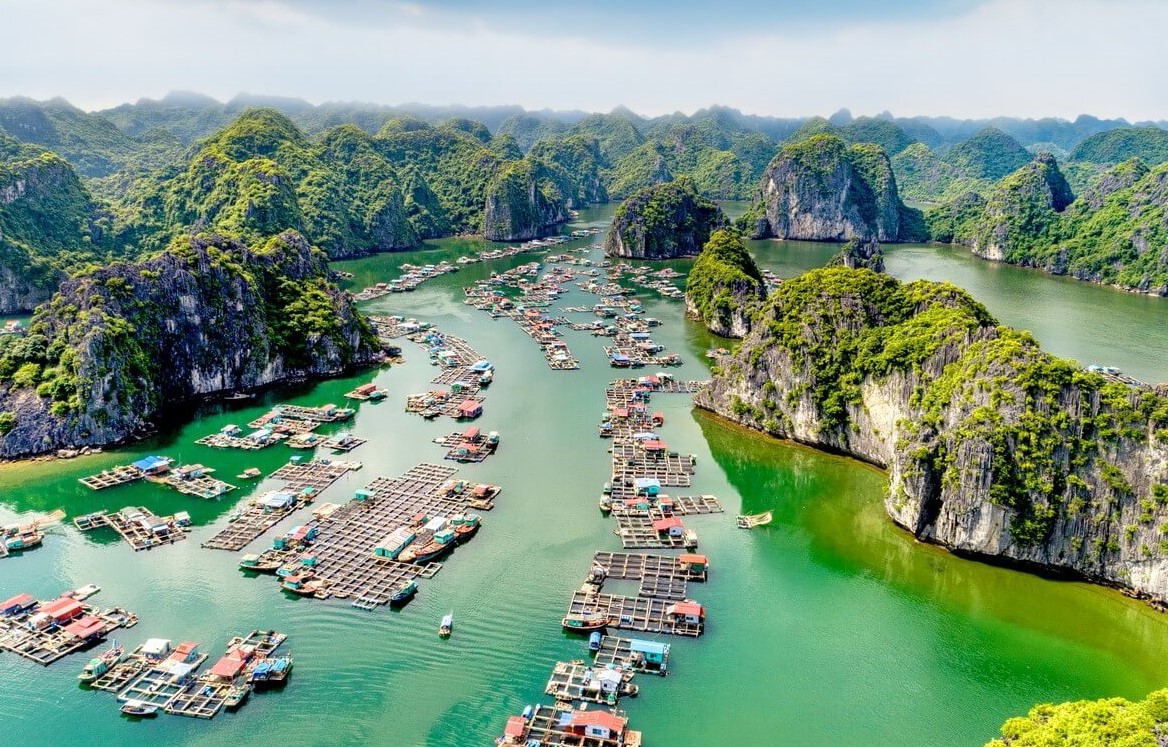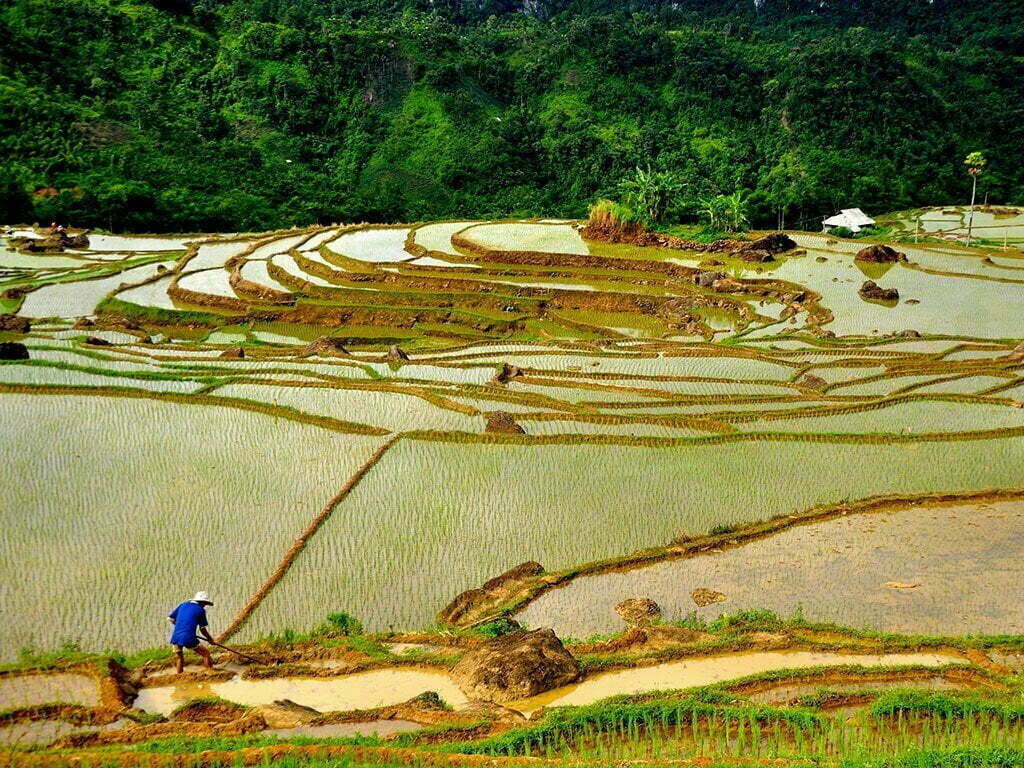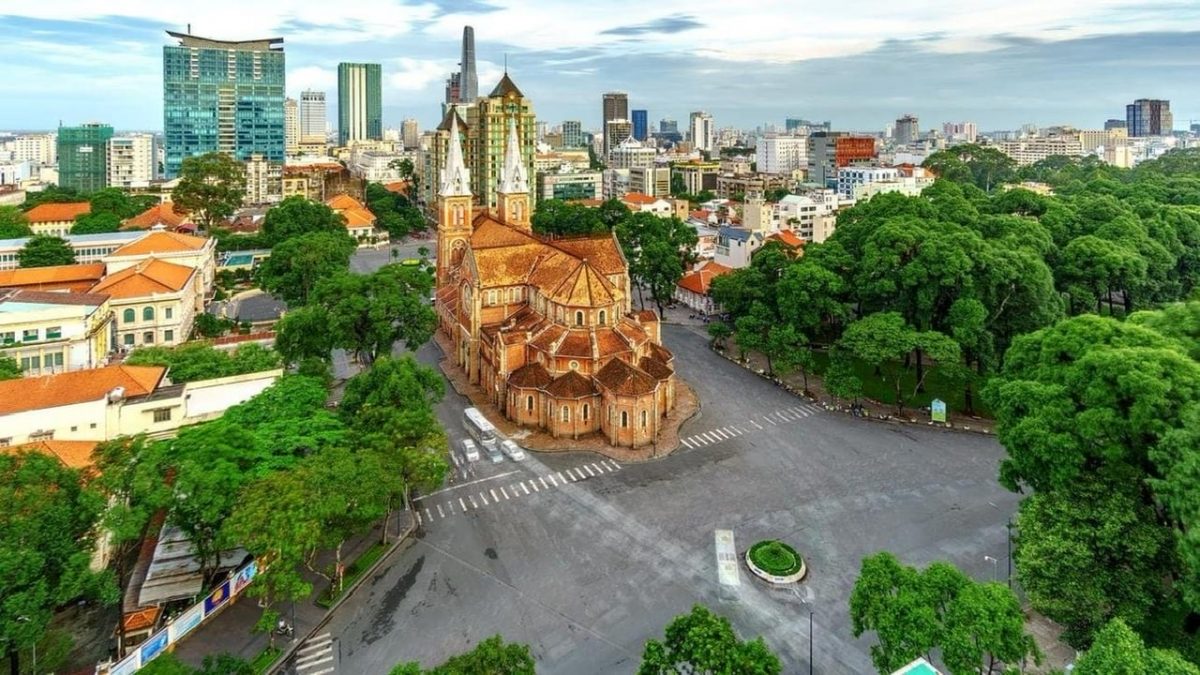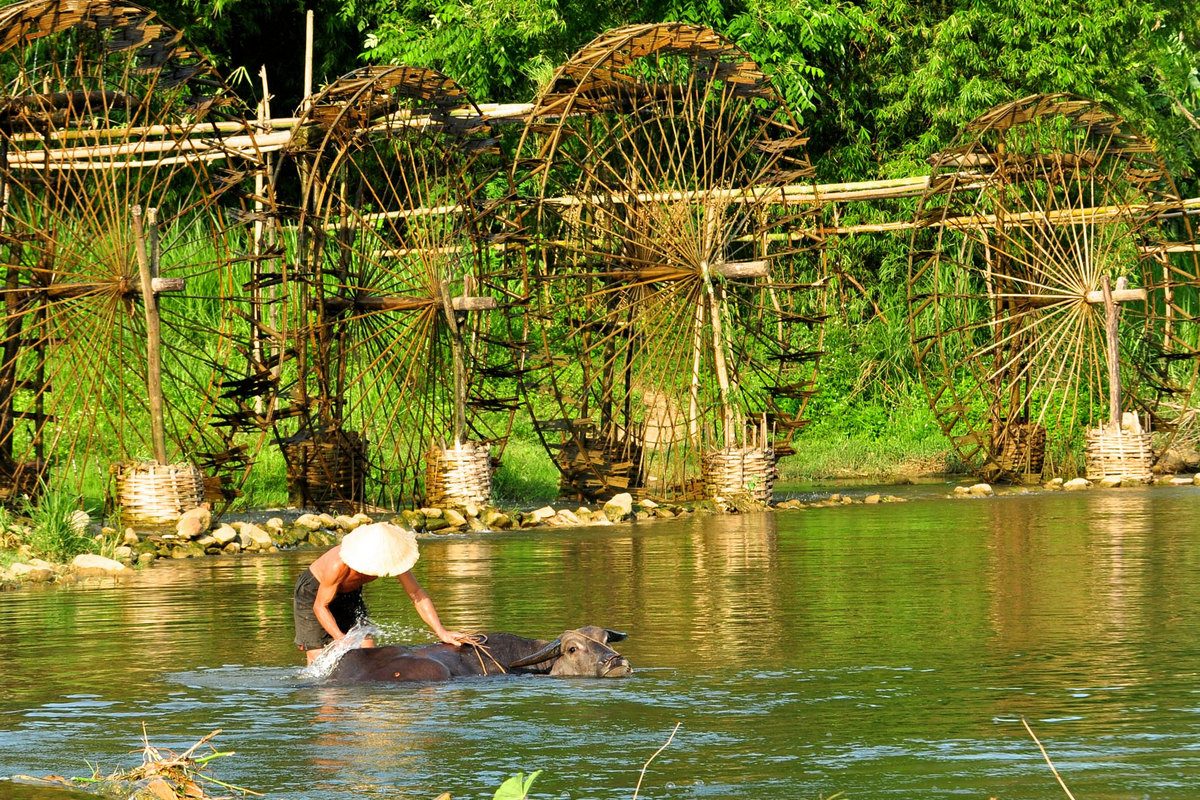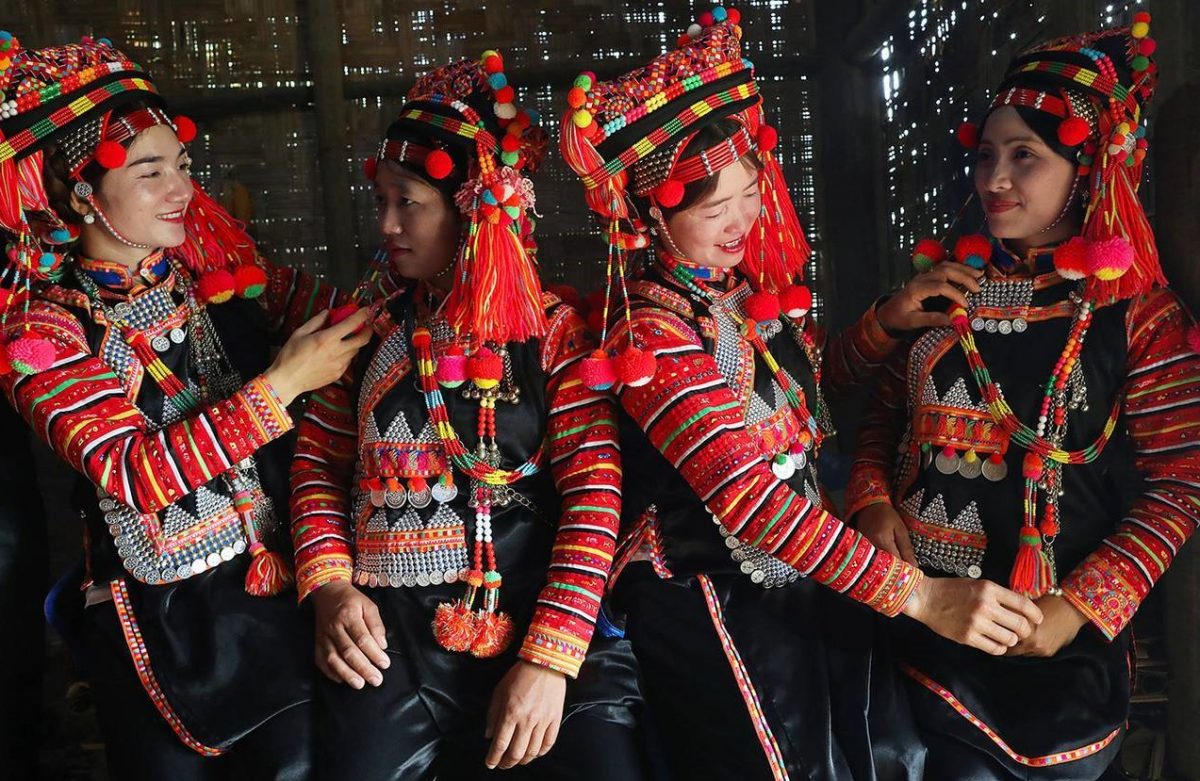Ha Giang
12/02/2019Ha Giang Province is known as Vietnam’s final frontier in Northeast region of Vietnam. It is located on the banks of the Lô River and bounded by Tuyen Quang, Lao Cai, Yen Bai & Cao Bang province.
Ha Giang is famous with high rocky mountains, terraced rice fields, limestone formation and springs. It is the place with 90% of the population ethnic minorities such as: Tay, Dzao, Lo Lo, Nung, Dzay, H’mong, Pu Peo.
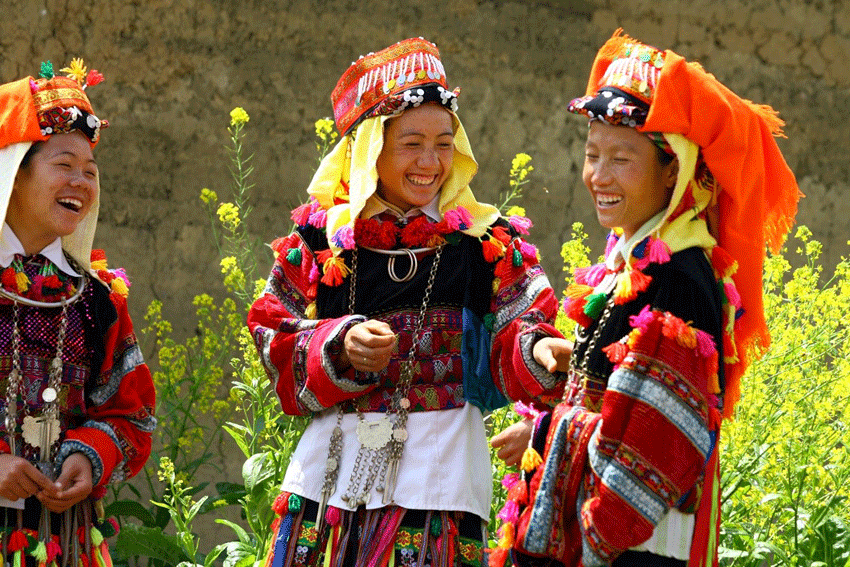
Coming to Vietnam and discover the amazing landscape, limestone pinnacles and granite outcrops with The Time Journeys!
Top 10 places you should not miss when you visit Ha Giang
1. Twin Mountains – Quan Ba
The Twin Mountains – Quan Ba is located 49km from Ha Giang in Na Khoang Village, Tam Son Town. Twin Mountains were formed from the geological movement processes of the earth’s crust, the fault of the limestone were about 400 million years ago. The perimeter of these 2 mountains are almost 1000 m² and the area is approximate 3.6 ha. It is beauty like a young lady with charming appearance. From high position, you can get a great view of Quan Ba Twin Mountains. You can stand to say Woahhh…
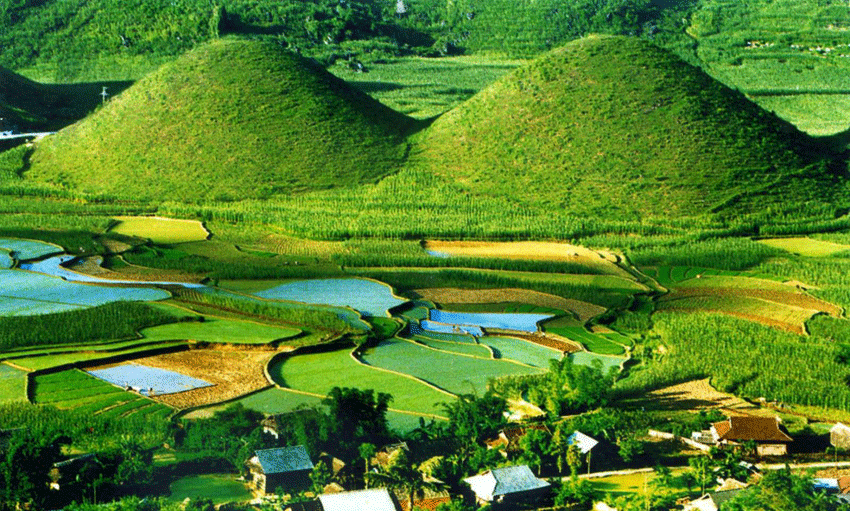
2. Hoang Su Phi Terrace Fields
Hoang Su Phi is located in the remote province of Ha Giang. It is in the far north but close to the border with China. It is in among best places to visit North of Vietnam with ethinic tribes who eke out a living in difficult terrain. There are around 50,000 inhabitants and their rice terraces are extremely important to their survival.
The rice is sown in rows at the start of the summer and is harvested before winter. When the rice is first sown, the water within each terrace glistens in the sun, but as the weeks go by, shoots begin to appear. They grow to create a different sight; green that thickens and darkens towards harvest time. When the rice is ready for harvest, they appear golden to the eye. Hoang Su Phi Terrance Fields are beautiful with yellow color of ripe rice and green of young rice.
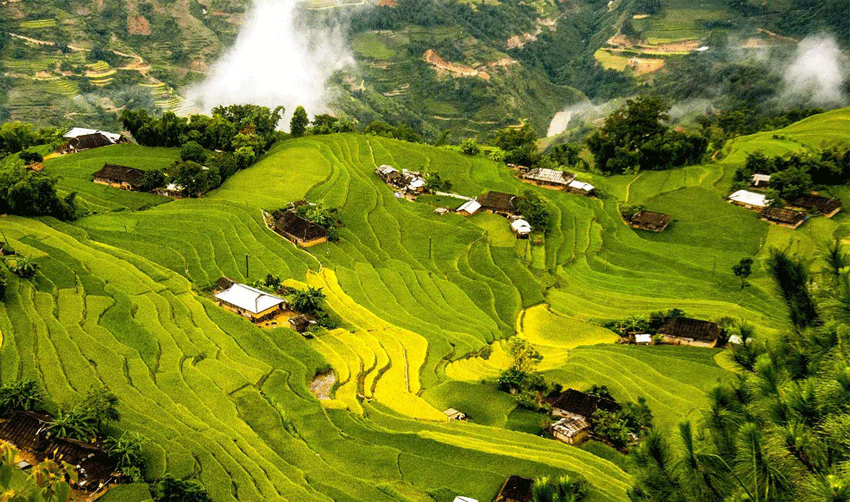
3. Dong Van Old Quarter
Dong Van Old Quarter is small quarter. It is located in Dong Van District with many old long houses. It is the ancient architecture over 100 years old. It is very impressive to experience the lifestyle of ethnic people here such as: Kinh, Mong, Hoa, Tay…
There are around 40 houses in this old quarter and they are surrounded by rocks. The common architecture is the two story house and yin and yang roofs. There is night market in old quarter on 14 – 15 – 16 March of Lunar Calendar. All houses hang red lanterns, display ethnic brocade and they sell traditional food as Thang Co, Men Men, Ta Chua of the H’mong in night market. If you have opportunity to visit Night market, you also experience culture of ethnic people and soak into dance of the Lo Lo. Dong Van Old Quarter is a best destination when you should not miss in Ha Giang.
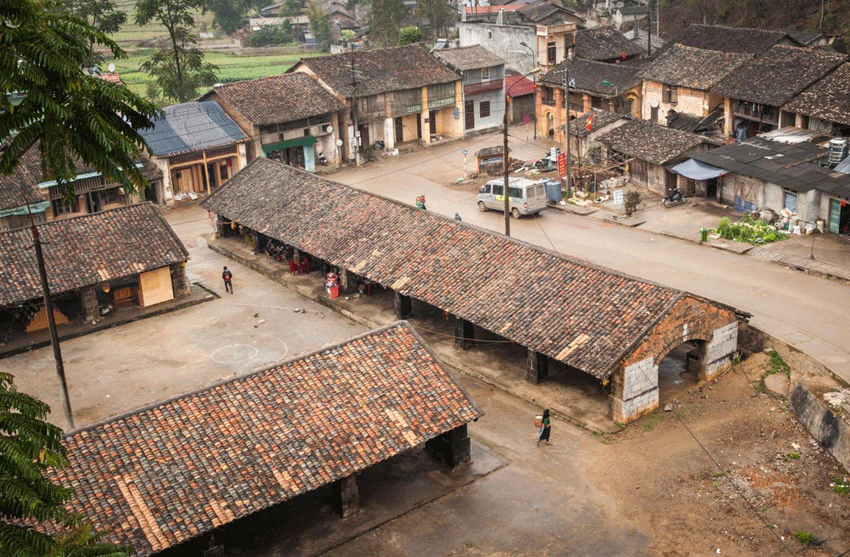
4. Ma Pi Leng Pass
Ma Pi Leng Pass is situated between Dong Van and Meo Vac. It is a high mountain Pass at an elevation of 1.500m above the sea level. Ma Pi Leng is one of the top 4 most dangerous passes of Vietnam with a length of about 20 km.
The weather is beautiful in Ha Giang in four seasons. So you can pass the Ma Pi Leng Pass at any time of the year. However from June to August is the summer. It is sunny and the right time to have beautiful pictures of the plateau. If it is rainy, the road is quite slippery and it is difficult to ride.
Come to Ma Pi Leng, you can see the mountains under your feet, the local village with their life far from your seat, see the retraced fields and Tam Giac Mach Flower from end of October to December.
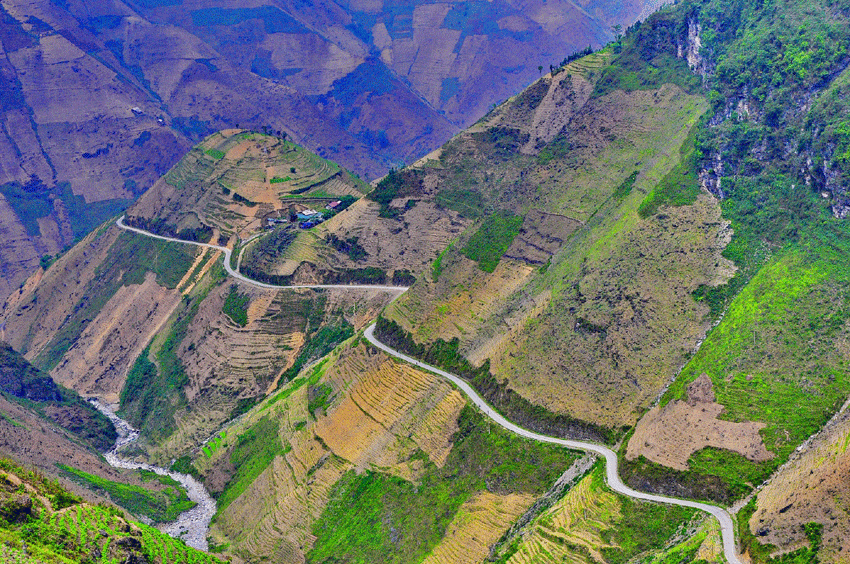
5. Lung Cu flag tower
Lung Cu Flag Tower is built in the peak of Dragon Mountain at altitude of 1,700m. It is located about 160km to the North – east of in Ha Giang City. Lung Cu Flag Tower is the landmark with important historical significance, marking Vietnam’s territorial sovereignty.
To get Lung Cu Flag Tower, you will step up 389 steps up to the high mountains. To get the peak, Here you can admire the spectacular natural scenery of Dong Van Karst Plateau, terraced rice fields, ethnic villages. At the foot of the flag tower, there is a commemorative house, where displays work tools, costumes and cultural products of the ethnic groups in Ha Giang Province. Under the mountains, you can the ethnic villages where you can discover their daily life and culture. High mountains with Happy Road will become smaller and within your eye view.
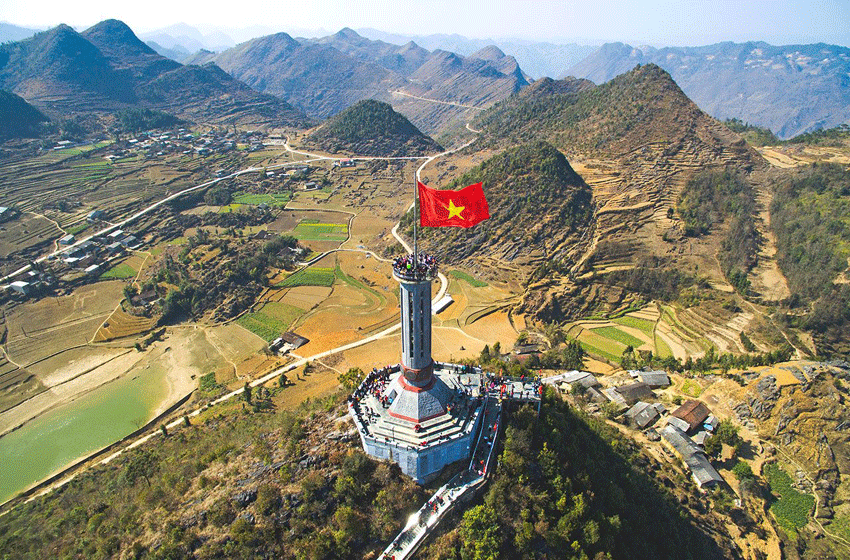
6. Hanh Phuc road (Happy Road)
Happy Road is 185 km long connecting many districts of Ha Giang, running through the Dong Van stone plateau, Ha Giang. It was formed by the hands of more than 1,300 men and women volunteers from 6 provinces of Viet Nam and two delta provinces (Nam Dinh, Hai Duong) and more than 1,000 people of 16 ethnic groups on the rocky plateau embarked on Mountains open the way within 7 years.
Happiness Road starts from Ha Giang City with milestone Km 0. The first 20 km of the road is relatively flat, we will meet the Pass Gate – Quan Ba heaven. Pass with a large slope to make cars have to crawl up. Standing on the Gate of Heaven, you will see the wealthy Tam Son town stretching out in the heart of the valley and Nui Doi – the twin mountain.
The road named “Happiness”, a happiness from the blood and bones of thousands of thousands of workers and young people. Style dating from 50 – 60 centuries ago. Not only “happy” by the effort to make the road that thanks to that road Ha Giang land and thousands of people here are no longer isolated as before, although poor but all aspects of life such as: Education, health, schools, utilities, and people’s lives are gradually growing. It is a way to brighten the future of many children now and forever.
The Road to Happiness brings a change of beauty in each season. In the winter, the road is grayish black patches of clouded sky, misty mist. In the summer, the road glows with the sunbeds of the dawn on the rocky plateau or the rainbow after the sudden rain. From September to November, this road diminishes visitors by the yellow rice season, purple pink of the buckwheat flowers and wild daisy flowers.
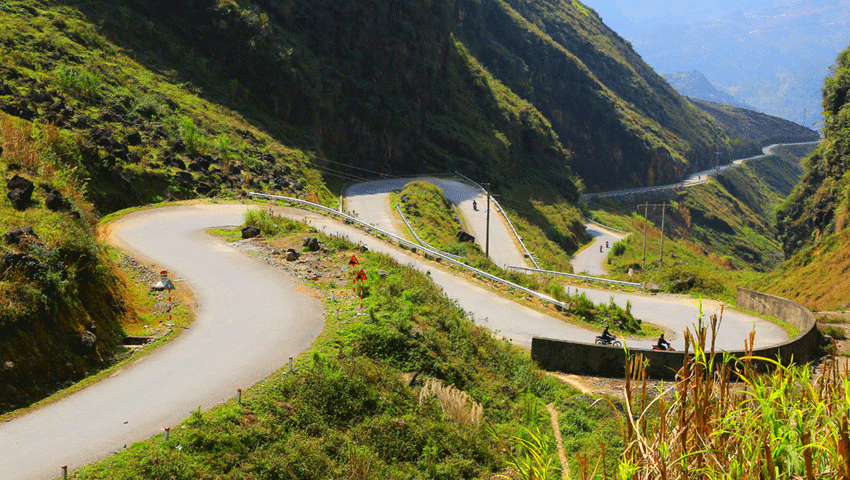
7. Lung Cam village – Pao’s story Vietnam movie
Lung Cam village is located around 25km from Dong Van Town, closed to No 4C highway. The village has 61 households and around 290 inhabitants. There are ethnic minority of white H’mong and Chinese with many ancient houses. The people here live on doing milpa. Corn, buckwheat, vegetables, beans are the main food here.
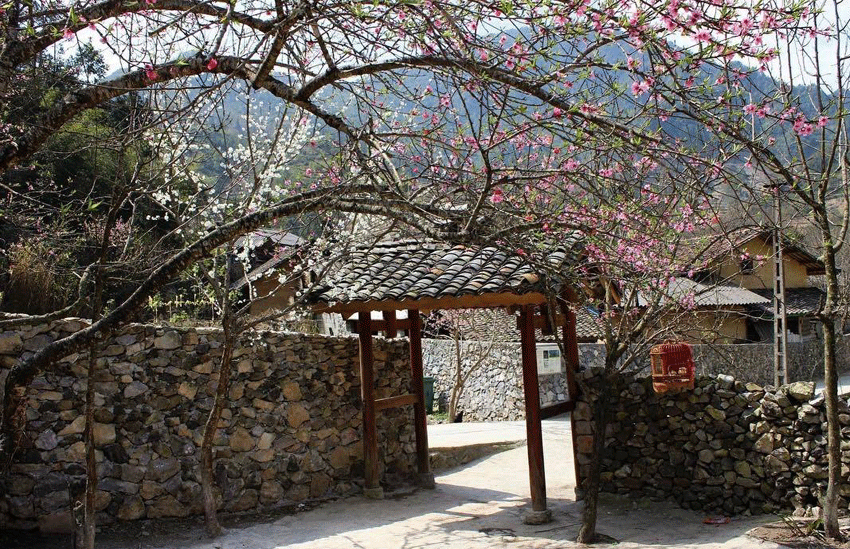
Lung Cam village has a reputation after chosen as the setting scene for the film name Pao’s story Vietnam movie which won Golden Kite Prize and a very famous prize of Vietnam movie assosiation. Coming here, you will see how beautiful architecture of ancient houses and experience the daily life of the local people. Ethnic village is really attractive to many visitors, the both of younger and older.
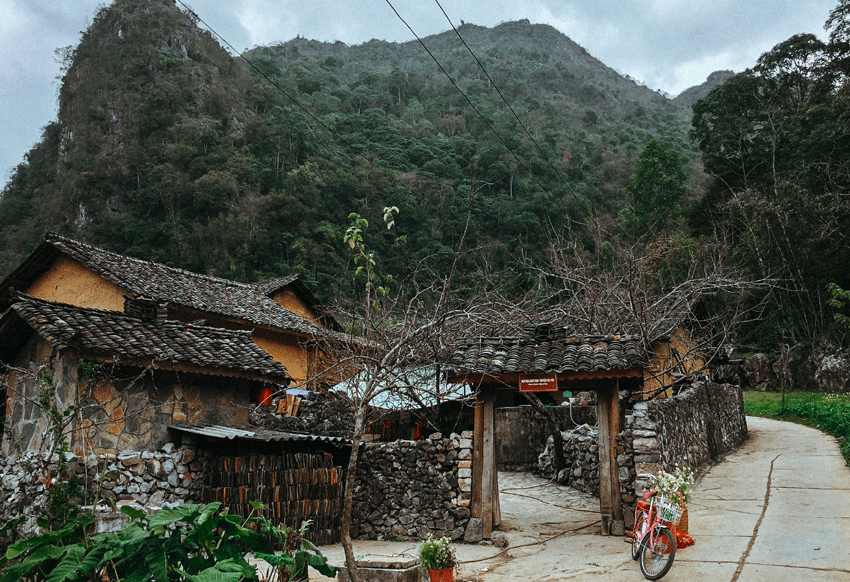
8. Mansion of Vuong family
The Mansion of Vuong family (Vuong Chi Sinh) is located about 24 km from Dong Van Province, in Xa Phin District. It was first buit in 1019 and completed in 10 years later. The structure has been classified as a relic from 1993.
The mansion is situated at 1600 meters height above sea level. It was built in turtle-shaped hill, looking to the south. The structure has shape of word “Vuong”. Through the time, the mansion still retains the original appearance. This place which converges all unique architectures of upland is not large but it has a beautiful architectural structure. Vuong mansion was built by the skillful of craftsmen who came from Yunnan (China) along with the best of the H’Mong workers. Therefore, the structure has architecture of China reign of Thanh combined with essence of the H’Mong. In the house, there hang a picture of Nguyen dynasty. The whole of mansion has an area of 1.120m2 with 64 different rooms including living room, office, bedroom, family member’s room, kitchen, opium storage…
This is like a gem of Vietnam in the forest. This huge mansion is surrounded by high ancient green trees. Through long time and history, this Vuong mansion still keeps its mysterious beautiful nature.
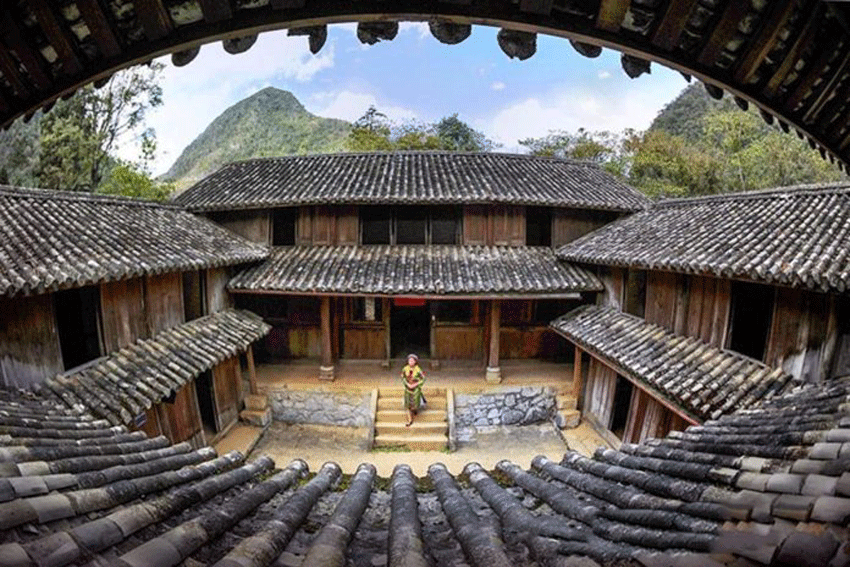
- Vietnam Travel Guide
- All Vietnam Tours
- Essence of Northern Vietnam – 10 Days
- Ha Giang Overland Experience – 5 Days

